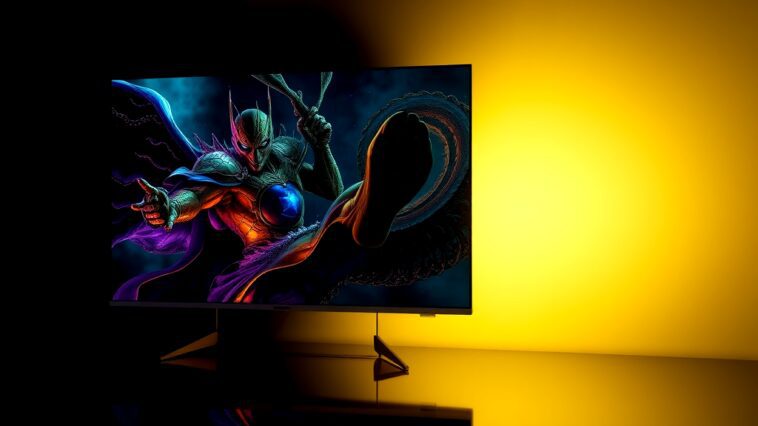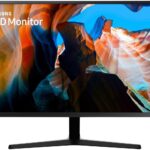Introduction
Have you ever watched a movie or played a video game and thought, “Wow! The colors look so vibrant and the images so clear!”? That’s often thanks to a technology called HDR, which stands for High Dynamic Range. HDR helps make pictures on TVs look more realistic by improving how colors, brightness, and contrast appear. If you’re thinking about buying a new TV, it’s essential to understand HDR, as it can greatly affect your viewing experience. This article is written by Rob, who has a background in technology and has researched HDR thoroughly to give you the best information.
What Is HDR?
Definition
HDR, or High Dynamic Range, is a technology that allows TVs to show a wider range of colors and brightness levels than standard TVs (also known as SDR, or Standard Dynamic Range). It uses special video signals that contain metadata. Metadata is like extra information that tells your TV how to display images correctly. With HDR, you get richer colors, brighter highlights, and darker shadows, making scenes look more lifelike.
Key Specifications
To understand HDR better, it’s helpful to know some key specifications that affect how HDR looks on your TV:
- Brightness: This refers to how bright the brightest part of the image can be. In HDR, TVs can reach much higher brightness levels compared to SDR TVs.
- Contrast Ratio: This measures the difference between the darkest and brightest parts of an image. A higher contrast ratio means you can see more detail in both bright and dark areas.
- Color Gamut: This is the range of colors a TV can display. HDR TVs can show a wider array of colors, making images more vibrant.
- Resolution: This refers to how many pixels make up the picture on your TV. Common resolutions today include 1080p, 4K, and even 8K in some high-end models. HDR works best with higher resolutions.
Common HDR Formats
Overview of Formats
There are several HDR formats available today. Here are some of the most popular:
- HDR10: This is the basic HDR format and is widely supported by most TVs and devices.
- HDR10+: An improvement over HDR10, this format allows for dynamic metadata, which means it can adjust the brightness and colors scene by scene.
- Dolby Vision: This is a more advanced HDR format that also uses dynamic metadata and supports even higher color depths, allowing for an even better viewing experience.
Differences Between Formats
When comparing HDR10 and Dolby Vision, one major difference is that Dolby Vision supports more colors and can adjust settings based on each scene, while HDR10 has static metadata, meaning it uses the same settings for the entire film. HDR10+ is similar to Dolby Vision but is less widely supported across devices.
The Importance of HDR in TVs
HDR vs. Non-HDR Content
HDR significantly enhances your viewing experience. For example, when you watch an HDR movie, the colors pop, the details in dark scenes are clearer, and everything looks more immersive. However, to truly enjoy HDR, you need HDR-compatible content, which is available on many Blu-rays, video games, and streaming services like Netflix and Amazon Prime.
Factors Affecting HDR Quality
Several factors can affect how good HDR looks on your TV:
- Panel Type: The type of display, such as OLED or LED, can influence HDR quality. OLED panels usually provide better contrast and color accuracy.
- Peak Brightness: The brighter your TV can get, the better the HDR will look.
- Contrast Ratio: A higher contrast ratio means better detail in both dark and bright areas.
- Color Gamut: The wider the color gamut, the more colors your TV can display, contributing to a richer image.
- Calibration: Proper calibration can enhance HDR performance, ensuring that colors and brightness levels are just right.
Understanding HDR Performance
Brightness and Contrast in HDR
One of the most noticeable differences between SDR and HDR is brightness. For example, imagine watching a beautiful sunset. On an SDR TV, the colors might look muted, while on an HDR TV, you’d see brilliant oranges, pinks, and yellows, making the sunset appear more realistic. HDR TVs can achieve brightness levels of over 1000 nits, while SDR TVs typically stay below 300 nits.
The Role of Panel Technology
Different technologies affect how HDR is displayed on your TV. For instance:
- Self-Emissive Pixels: This technology, used in OLED TVs, means each pixel can turn on and off individually, allowing for perfect blacks and fantastic contrast.
- Full-Array Local Dimming: This is used in some LED TVs, where groups of LEDs can dim or brighten based on the image being displayed, offering better contrast and deeper blacks.
Is HDR Worth It?
Overall Benefits of HDR
The improvements HDR brings to image quality are significant. You get more vibrant colors, better contrast, and a more immersive viewing experience. If you enjoy movies, video games, or sports, investing in an HDR TV can enhance your enjoyment.
Cost Considerations
HDR TVs can be more expensive than standard TVs, but many consumers feel the investment is worth it for the improved picture quality. Prices vary widely, so it’s essential to consider your budget and how much you value the enhanced experience.
Conclusion
In summary, HDR is a game-changer for TV viewing. It enhances the picture quality by providing better brightness, contrast, and color. For anyone considering a new television, understanding HDR and its benefits is crucial. Investing in an HDR-capable TV can lead to a more enjoyable and immersive viewing experience.
Other Related Articles
- Eizo Foris FS2331 Review
- How Much Power Does a 144Hz Monitor Use? A Deep Dive into Energy Consumption
- Should I Turn On HDR for Gaming? A Comprehensive Guide
- Is iPhone 16 Pro OLED the Best Display Yet?
- Understanding Panel Variance: What It Means for Your Monitor Purchase
- Can You Throw Computer Monitors in the Trash? The Ultimate Guide to Eco-Friendly Disposal
- Understanding VESA ClearMR: The Future of Motion Clarity in Displays
- 4K vs 1080p – Is UHD Worth The Upgrade?
- How To Choose The Right Gaming Monitor: A Comprehensive Guide
- IPS vs OLED Monitors for Color Accuracy: The Ultimate Showdown
- HDMI 2.1: The Future of Home Entertainment and Gaming
- How to Connect Heart Rate Monitor to PC?
- Curved vs Flat TV – Which Should You Choose? The Ultimate Showdown for 2025
- Can You Connect M-Audio Monitors to PC?
- Why Is My PC Showing the Same Display on Two Monitors?
- Why Are Computer Monitors More Expensive Than TVs?
- The Best Flicker-Free Monitors for Eye Care
- Monitors for Mac vs Windows PCs: The Ultimate Showdown
- 1920×1080 vs 2560×1440 – Which One Should I Choose?
- 99219444 Toshiba and Its Revolutionary Features for Tomorrow’s Tech Landscape
- OLED vs QD-OLED: The Showdown of Display Technologies
- What Is DisplayPort 2.1?
- What Is The Best Monitor Size For Gaming?
- 720p vs 1080p vs 1440p vs 4K vs 8K – Which Should I Choose?
- Is An HDR Gaming Monitor Worth It?
- Mini-LED vs MicroLED: What’s the Difference?
- Do Pawn Shops Take Computer Monitors?
- What LG Computer Monitor is as Good as the C3?
- Understanding Pixel Walk and Pixel Inversion
- Curved vs Flat Monitors for Work: Which One is Right for You?
- What Is The Soap Opera Effect?
- 4K vs 1440p Monitors for Video Editing: Which One Should You Choose?
- Do I Have to Attach a Hood to My BenQ Monitor?
- Can You Use Mac as a Monitor for PC?
- What Is G-SYNC And What Does It Do?
- Daz Studios Summoner G8 for the Visionary Artist
- Dell vs HP Monitors for Gaming
- Understanding IPS Technology: A Comprehensive Guide
- 27-Inch Monitors vs 32-Inch Monitors for Productivity
- Understanding Screen Resolution: Why It Matters for Your Displays
- How to Transport Computer Monitors?
- How to Dispose of Computer Monitors?
- What Is 4K Resolution And Is It Worth It?
- How to Pack Computer Monitor for Moving?
- What Is HDR For TVs And Is It Worth It?
- 1440p or 144Hz – Which Is Best For You?
- USB Type-C Explained – Everything You Need To Know
- Samsung’s Exciting Journey into Glasses-Free 3D Displays at Gamescom 2024
- I Have A Problem with My Samsung Odyssey G3 Monitor Setup
- Is A 144Hz Monitor Worth It? A Comprehensive Guide
- Understanding FALD Blooming and the Halo Effect: A Deep Dive
- What Does 144Hz Mean? Understanding Refresh Rates in Simple Terms
- Is an UltraWide Monitor the Right Choice for You?
- Active vs Passive 3D – What’s The Difference?
- Understanding Glare Control in Luminaires for Computer Users
- Why Does My Acer Monitor Keep Going Black?
- Understanding Motion Blur Reduction: A Gamer’s Guide
- How to Connect Studio Monitors to PC?
- Misleading Monitor Specifications You Should Look Out For
- QLED vs OLED – Which Is Best?
- Understanding VESA AdaptiveSync and MediaSync: The Future of Display Technology




